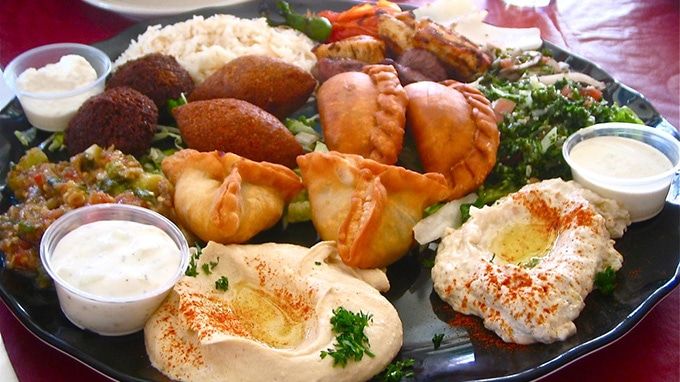
Swedish and Norwegian cuisines share several similarities due to their geographical proximity and common Scandinavian roots. However, there are some distinct differences between the two that set them apart:
- Seafood: While both countries have a strong tradition of seafood, Norway is particularly famous for its high-quality fish such as salmon, cod, and herring. Norwegian cuisine tends to feature more dishes that showcase these fish, like gravlax, rakfisk, and klippfisk. Swedish cuisine also includes fish dishes, such as pickled herring and gravad lax, but the variety and emphasis on fish are generally more pronounced in Norwegian cuisine.
- Meat: Both countries consume meat, but Swedish cuisine is more known for its meatballs (Swedish: köttbullar), served with lingonberry sauce, mashed potatoes, and gravy. In contrast, Norwegian cuisine features dishes like fårikål (lamb and cabbage stew) and raspeballer (potato dumplings with bits of salted meat).
- Dairy: Both countries use dairy products, but Norwegian cuisine often incorporates a unique brown cheese called brunost or gjetost, made from whey. This cheese has a distinctive caramel flavor and is commonly used in sandwiches or desserts. Swedish cuisine features dairy products like filmjölk (a fermented milk product) and Västerbottensost (a strong-flavored, aged cheese).
- Bread: Both countries enjoy bread, but the types of bread can vary. Norwegian cuisine typically includes flatbreads, like lefse and crispbread (knekkebrød). Swedish cuisine features a wider variety of bread, such as tunnbröd (thin flatbread) and kavring (a type of rye bread).
- Desserts and pastries: Swedish cuisine is known for its fika culture, which involves taking a coffee break and enjoying pastries like cinnamon buns (kanelbullar) and cardamom buns (kardemummabullar). Norwegian pastries and desserts include krumkake (a cone-shaped cookie) and kransekake (a tower of ring-shaped almond cookies).
- Preservation methods: Both countries traditionally use preservation methods like pickling, fermenting, and drying, but there are some regional differences in their application. For example, Swedish cuisine often features pickled herring with various flavorings, while Norwegian cuisine includes rakfisk, a fermented fish dish.
These differences in ingredients, dishes, and culinary traditions showcase the unique aspects of Swedish and Norwegian cuisines while also highlighting their shared Scandinavian roots.
Continuing with more differences between Swedish and Norwegian cuisines:
- Spices and flavorings: Swedish cuisine tends to incorporate spices like allspice, white pepper, and cardamom in its dishes, while Norwegian cuisine often favors milder flavors and simpler seasonings, such as dill, parsley, and black pepper.
- Smörgåsbord and Koldtbord: Swedish cuisine is famous for its smörgåsbord, a buffet-style meal featuring a variety of hot and cold dishes, including pickled herring, gravad lax, meatballs, and small sausages. In contrast, Norwegian cuisine has a similar concept called koldtbord, but the selection of dishes may include more seafood options like gravlax, cured meats, and various types of fish salads.
- Traditional holiday dishes: Both countries celebrate holidays with traditional dishes, but the specifics can vary. For example, during Christmas, Swedish cuisine features dishes like lutfisk (dried fish in a white sauce) and Jansson’s Temptation (a potato and anchovy casserole), while Norwegian cuisine includes dishes like lutefisk, pinnekjøtt (dried, salted, and sometimes smoked lamb ribs), and ribbe (roasted pork ribs with a crispy rind).
- Coffee consumption: While both countries have a strong coffee culture, Sweden is particularly known for its fika tradition and higher coffee consumption per capita compared to Norway. Coffee breaks in Norway often include pastries like skillingsboller (cinnamon rolls) and solskinnsboller (sweet buns filled with vanilla cream and topped with coconut).
- Street food: Sweden is famous for its hot dogs (korv) served with various toppings like mashed potatoes, shrimp salad, and crispy onions. In Norway, pølse (sausages) are also popular, often served with lompe (a thin potato flatbread) and a variety of condiments.
- Regional specialties: Both countries have unique regional dishes. For example, in Sweden, surströmming (fermented herring) is a traditional dish from northern Sweden. In Norway, rakfisk (fermented fish) is a regional specialty from the Valdres region, and raspeballer (potato dumplings) are popular in western Norway.
These additional differences further highlight the unique characteristics of Swedish and Norwegian cuisines while emphasizing their shared heritage and regional influences.